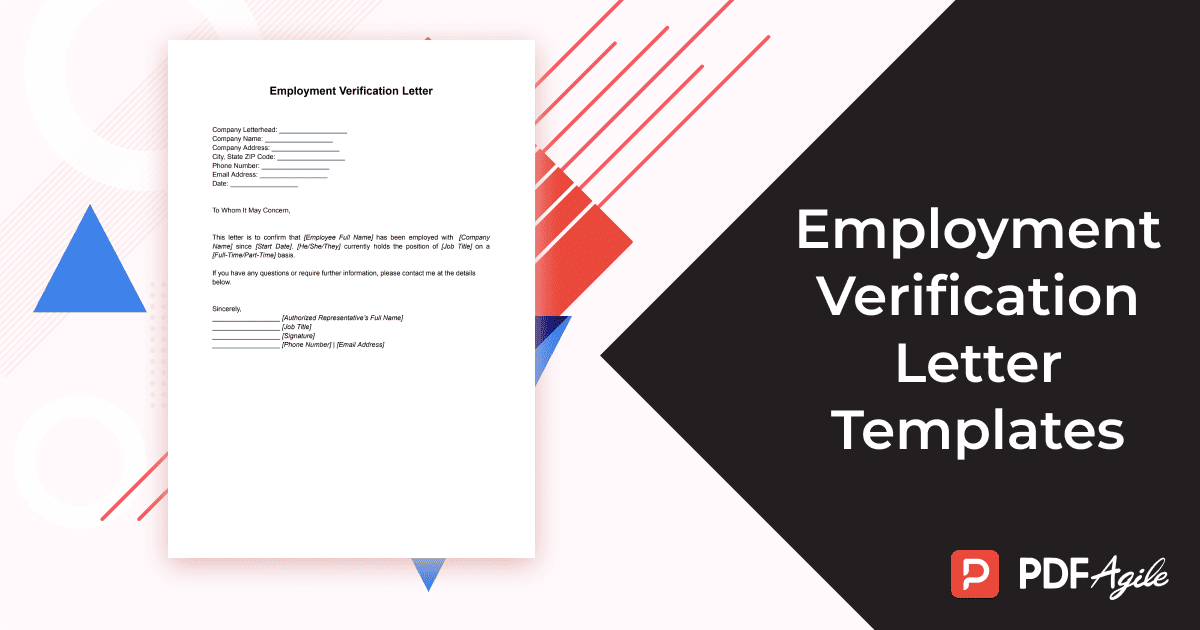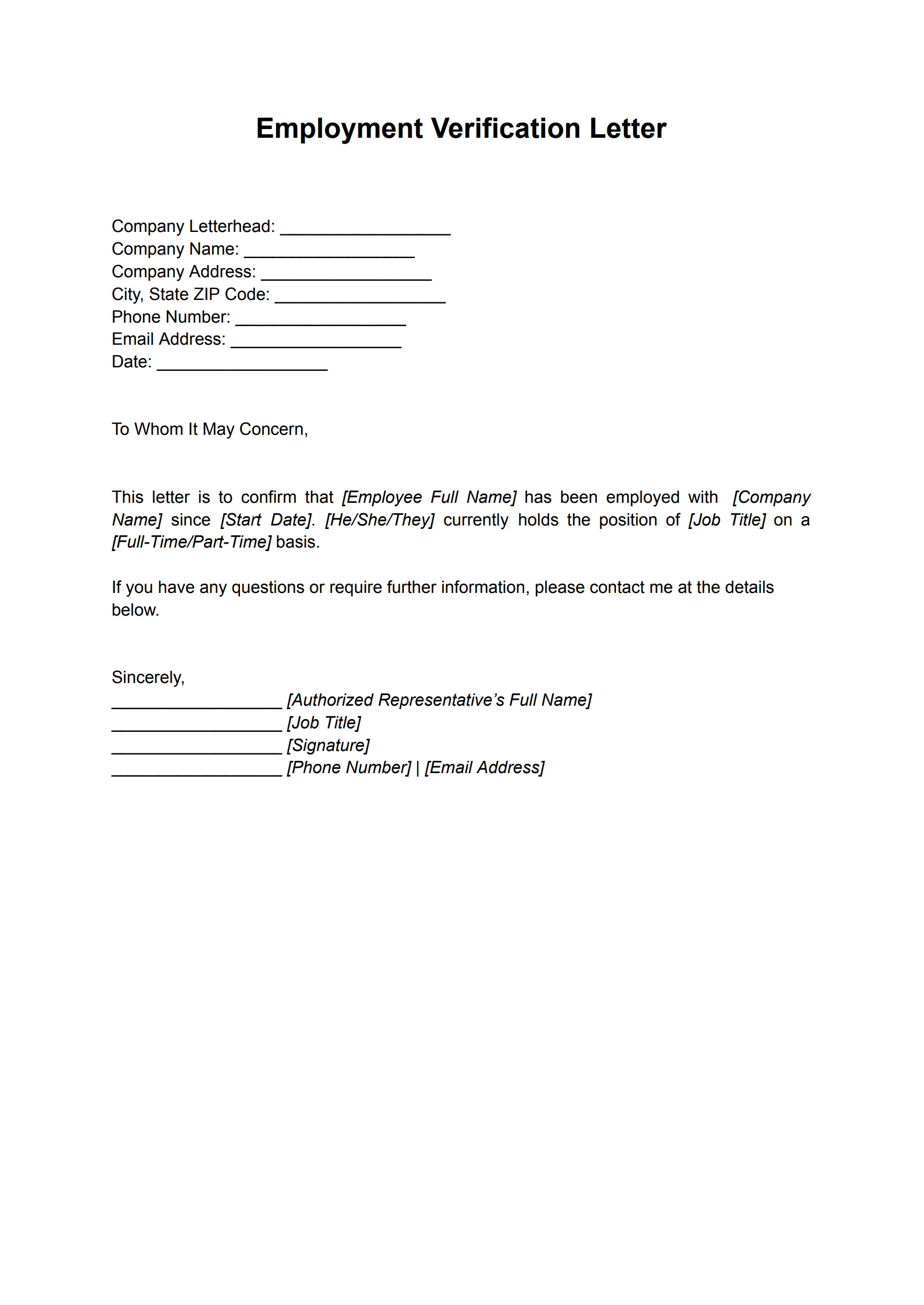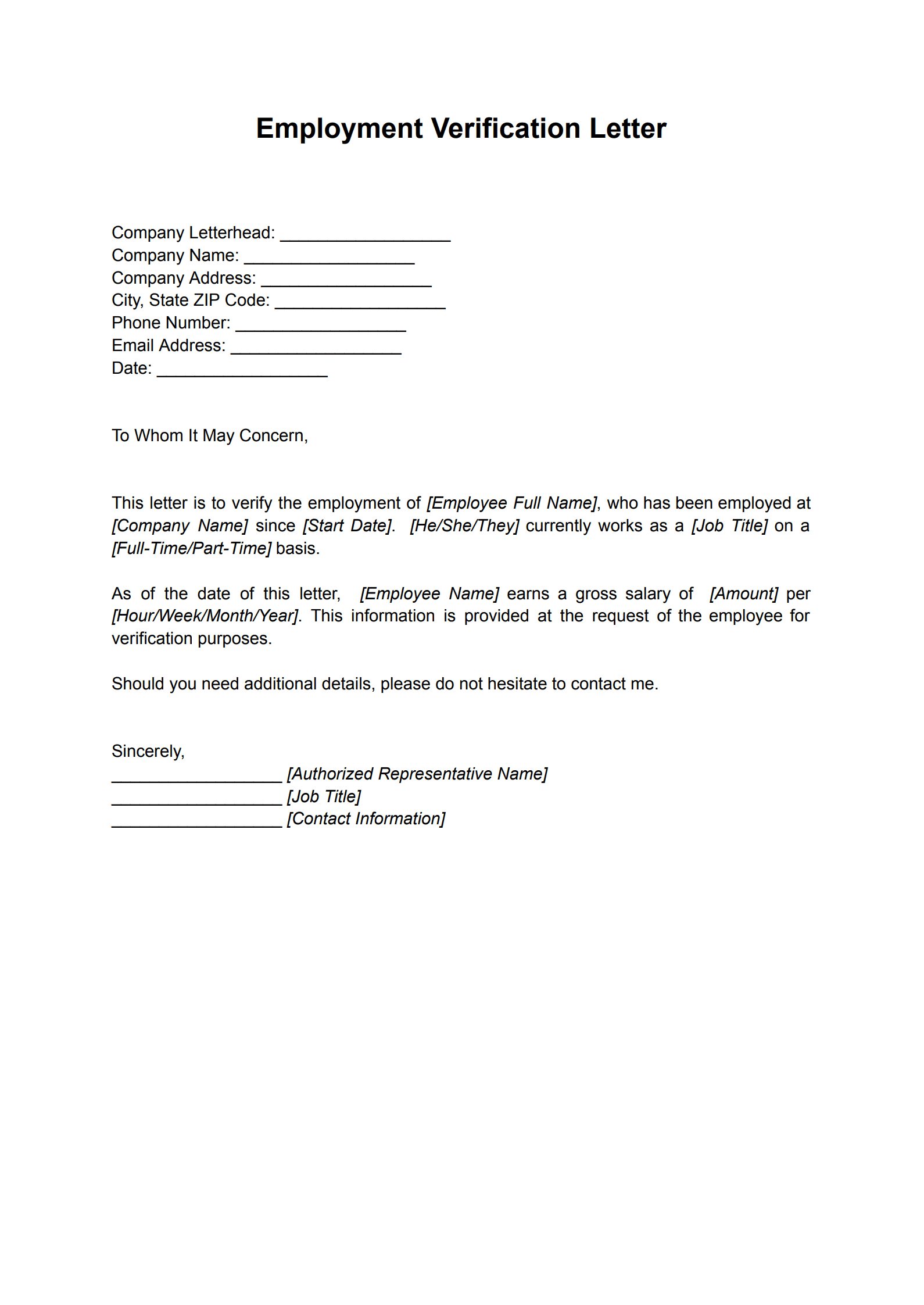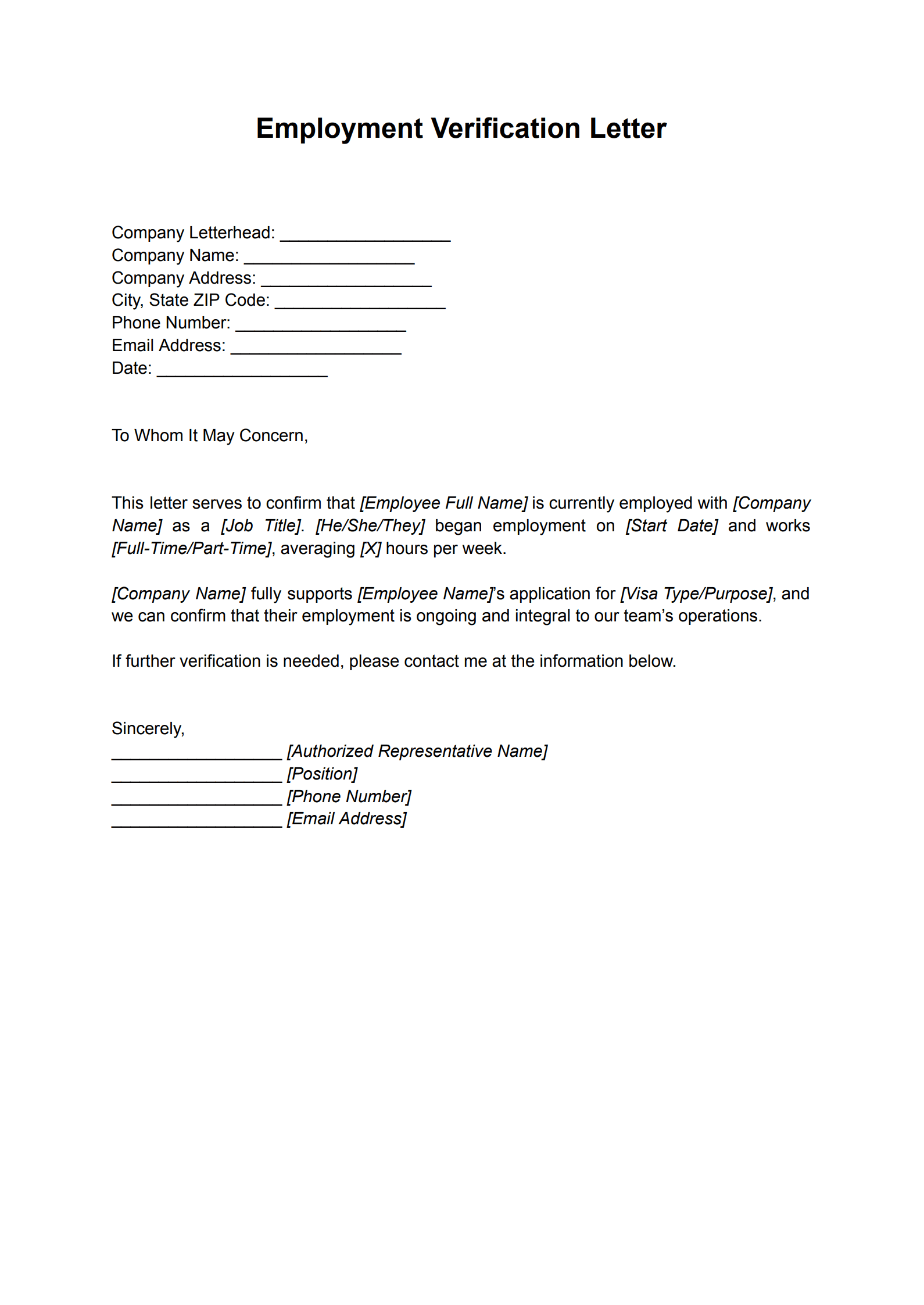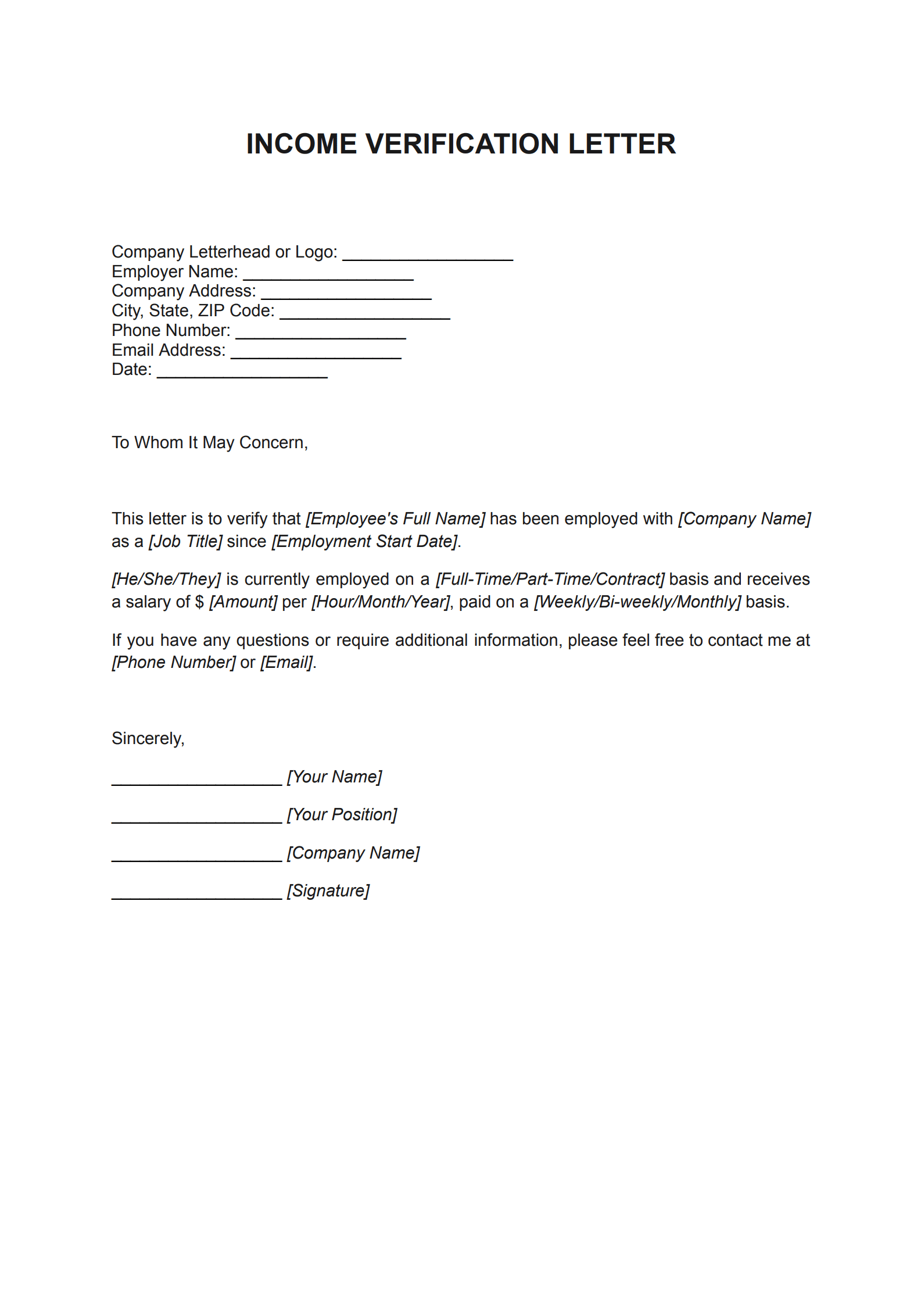In professional settings, requests for proof of employment are common, whether for renting an apartment, applying for a loan, or verifying job history. The document that fulfills this purpose is known as an employment verification letter, sometimes referred to as a job verification letter. This formal letter confirms a person’s current or past employment status, helping third parties validate the individual’s work background.
This comprehensive guide will walk you through everything you need to known abort the employment verification letter, from understanding its purpose to creating it step by step by yourself. Let's start right now!
When Do You Need an Employment Verification Letter?
The need for an employment verification letter typically arises when an employee or former employee is required to demonstrate their job status to an external party. For instance, landlords often request one to confirm that a potential tenant has a stable income. Similarly, financial institutions may ask for it when reviewing a loan or mortgage application. It’s also commonly used during immigration proceedings, academic admissions, or job applications where background verification is part of the process.
Employers might also receive direct requests from government agencies, insurance companies, or recruitment firms seeking to verify a worker’s position, salary, or employment duration. In these scenarios, providing a well-structured, professional verification letter is essential for accuracy, compliance, and credibility.
What Is an Employment Verification Letter?
An employment verification letter is a formal document issued by an employer to confirm an individual’s job-related information. This may include the employee’s job title, employment dates, salary, work schedule, and overall employment status (active, on leave, or terminated). It acts as a reliable source of truth that can be used by third parties for evaluation, validation, or administrative purposes.
Types of Employment Verification Letters
There are several types of employment verification letters, depending on the purpose and the requesting party:
- Basic Employment Verification Letter A concise document confirming job title, employment dates, and company affiliation. It typically omits salary or sensitive details.
- Employment Verification Letter with Salary Information Often required by banks or mortgage lenders, this version includes compensation details such as annual salary, bonuses, or hourly wages.
- Employment Verification Letter for Immigration Tailored for visa or immigration processes, this letter may include the nature of the work, job responsibilities, and the intention for continued employment.
- Self-Employment Verification Letter Used by freelancers or business owners to confirm their own employment. It often comes with attached documents such as tax records or client contracts.
- Third-Party Verification Request Response Sometimes, employers respond directly to verification requests submitted by third parties, providing information with or without the employee’s prior consent, depending on jurisdiction.
Key Components of an Employment Verification Letter
To ensure completeness and legal validity, an employment verification letter should include the following detailed components:
- Employer’s Information The letter should begin with the name, address, phone number, and official email of the company issuing the letter. This provides credibility and a point of contact for further inquiries.
- Date of Issue Including the date is essential for confirming the relevance and timeliness of the verification.
- Employee’s Full Name The individual’s legal name should be stated clearly and correctly to avoid confusion or rejection.
- Job Title and Department Specify the employee’s official job title and, optionally, the department they work in.
- Employment Status and Duration Indicate whether the employee is full-time, part-time, on leave, or has ended their employment. Provide the employment start date, and if applicable, the end date.
- Salary Information (if requested) Clearly outline the employee’s current salary, payment frequency (hourly, weekly, annually), and any additional compensation if relevant. This should only be included when explicitly requested and permitted by the employee.
- Work Schedule or Hours In some cases, verification letters must confirm weekly hours or work shifts, particularly for part-time employees.
- Company Representative’s Signature and Title The letter should be signed by a manager, HR officer, or another authorized representative, along with their printed name and job title.
- Contact for Follow-Up Include an email or phone number where the recipient can confirm the authenticity of the letter if needed.
How to Write an Employment Verification Letter: Step-by-Step
Writing a professional employment verification letter requires both accuracy and clarity. Since this document may be used for official procedures such as loan approvals, visa applications, or housing agreements, the information must be factual, complete, and presented in a professional tone. Here’s a detailed breakdown of the steps involved:
1. Collect and Confirm Necessary Information: Before drafting the letter, make sure you have all the relevant details at hand. This includes the employee’s full name, current job title, department, dates of employment (start and end, if applicable), employment status (full-time, part-time, contract, etc.), and any additional data the requesting party has specified, such as salary or weekly hours. Always confirm whether the employee has consented to share sensitive information like compensation.
2. Use Company Letterhead or Official Template: Begin the letter on your organization’s official letterhead. This adds authenticity and makes it easier for recipients to verify the source. If your company has a standard format or digital template for verification letters, use that as your base to maintain brand consistency and compliance.
3. Write a Clear and Direct Introduction: Start with a formal greeting such as “To Whom It May Concern” unless the recipient’s name is known. In the first sentence, clearly state that the letter is being written to verify the employment status of the individual. Use straightforward language, for example: “This letter is to confirm that [Employee’s Name] is employed with [Company Name]...”
4. Provide Detailed Employment Information: In the body of the letter, describe the employee’s current position, including job title, department, and type of employment (e.g., full-time, part-time, temporary). Mention the start date and include the end date if the employee is no longer working at the company. If the request involves financial institutions or immigration offices, include the employee’s current salary and typical work schedule if permitted.
5. Add Any Custom Information Based on the Request: If the third party has asked for specific information, such as length of employment, job responsibilities, or likelihood of continued employment, address those points in a clear and neutral manner. Refrain from sharing opinions, performance reviews, or any details that could be considered confidential unless expressly authorized.
6. Conclude with Contact and Signature: Close the letter with a professional sign-off. Provide the name, job title, phone number, and email of the person writing the letter so that the recipient can follow up if needed. Add a handwritten or digital signature, along with the date of issue. In some formal settings, it may be appropriate to stamp or notarize the document.
7. Review and Send Securely: Before sending, proofread the letter carefully to ensure that all facts are correct and that the tone remains formal and respectful. The letter should be free of spelling or formatting errors. Once finalized, send it securely—either as a printed document in a sealed envelope or digitally in PDF format using a secure platform.
Employment Verification Letter Templates – Copy and Use
1. Basic Employment Verification Letter Sample
[Company Letterhead]
[Company Name]
[Company Address]
[City, State ZIP Code]
[Phone Number]
[Email Address]
[Date]
To Whom It May Concern,
This letter is to confirm that [Employee Full Name] has been employed with [Company Name] since [Start Date]. [He/She/They] currently holds the position of [Job Title] on a [Full-Time/Part-Time] basis.
If you have any questions or require further information, please contact me at the details below.
Sincerely,
[Authorized Representative’s Full Name]
[Job Title]
[Signature]
[Phone Number] | [Email Address]2. Employment Verification Letter with Salary Sample
[Company Letterhead]
[Company Name]
[Company Address]
[City, State ZIP Code]
[Phone Number]
[Email Address]
[Date]
To Whom It May Concern,
This letter is to verify the employment of [Employee Full Name], who has been employed at [Company Name] since [Start Date]. [He/She/They] currently works as a [Job Title] on a [Full-Time/Part-Time] basis.
As of the date of this letter, [Employee Name] earns a gross salary of [Amount] per [Hour/Week/Month/Year]. This information is provided at the request of the employee for verification purposes.
Should you need additional details, please do not hesitate to contact me.
Sincerely,
[Authorized Representative Name]
[Job Title]
[Contact Information]3. Employment Verification Letter for Immigration Sample
[Company Letterhead]
[Date]
To Whom It May Concern,
This letter serves to confirm that [Employee Full Name] is currently employed with [Company Name] as a [Job Title]. [He/She/They] began employment on [Start Date] and works [Full-Time/Part-Time], averaging [X] hours per week.
[Company Name] fully supports [Employee Name]’s application for [Visa Type/Purpose], and we can confirm that their employment is ongoing and integral to our team’s operations.
If further verification is needed, please contact me at the information below.
Sincerely,
[Authorized Representative Name]
[Position]
[Phone Number]
[Email Address]
Why Use an Employment Verification Letter Template?
Using an employment verification letter template saves time, reduces error, and ensures that essential details are consistently included in every letter issued. It helps businesses maintain professionalism and protects them from legal risks that may arise from inconsistent or incomplete documentation. Templates streamline HR workflows, especially when processing multiple requests, and they also make it easy for employees to obtain quick and credible documentation when they need it most.
A well-prepared employment verification letter reflects the reliability and structure of the organization. It enhances the credibility of the employee in front of landlords, banks, or immigration offices, and builds trust with third-party institutions. Most importantly, it ensures that sensitive employment details are communicated clearly, responsibly, and securely — every time.
Free Download: Your Customizable Employment Verification Letter Template
Need a quick and easy way to create a professional employment verification letter? Download our free, customizable templates by clicking the Use Template button on this page. Simply add your specific information and print them out.
